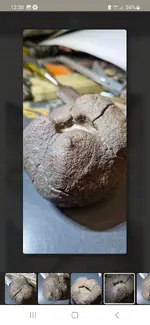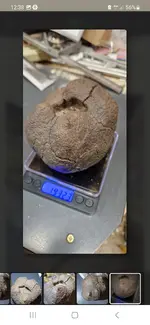You are using an out of date browser. It may not display this or other websites correctly.
You should upgrade or use an alternative browser.
You should upgrade or use an alternative browser.
🔎 UNIDENTIFIED Possible meteorite
- Thread starter stuart7
- Start date
Al D
Bronze Member
- Joined
- Jul 23, 2011
- Messages
- 2,066
- Reaction score
- 3,538
- Golden Thread
- 0
- Location
- Gold canyon AZ
- Detector(s) used
- DJI Air 2S
- Primary Interest:
- Cache Hunting
Upvote
0
Al D
Bronze Member
- Joined
- Jul 23, 2011
- Messages
- 2,066
- Reaction score
- 3,538
- Golden Thread
- 0
- Location
- Gold canyon AZ
- Detector(s) used
- DJI Air 2S
- Primary Interest:
- Cache Hunting
So, I guess that when you don’t get the response you want, you repost under a new thread?
Upvote
2
- Joined
- Dec 23, 2019
- Messages
- 6,324
- Reaction score
- 20,201
- Golden Thread
- 0
- Location
- Surrey, UK
- Primary Interest:
- All Treasure Hunting
This is becoming unmanageable. By posting this specimen again, you will fragment the discussion in an unhelpful way.
As things stand, from the pictures and descriptions you provided on your other thread, I would summarise:
- It has characteristics which are completely consistent with a breadcrust lava bomb
- The location where you found it is also consistent with a lava bomb and such specimens are well-reported within 30 miles of that location.
- You took it to a geologist (of unknown repute) who told you it was a pyrite nodule. While I disagree with that identification (but only have the pictures to go on) the way to confirm this (or otherwise) would be by a streak test. You said you would do this but haven’t provided the result.
- It does not have typical characteristics for a meteorite and I’m sure it is not meteoritic (even only having pictures to go on). I have studied and collected meteorites for over 40 years, and have an extensive collection.
It has been suggested by some that you cut into it so the interior can be examined, with others saying you would ruin its value. My views on that would be as follows:
- It is not necessary to cut into a specimen to determine if it is a meteorite. Confirmatory testing can easily be done non-destructively. At worst, such testing may leave a small mark on the surface which will not detract from its value. Confirmatory testing is not however the same thing as meteorite ‘approval’.
- If it passed those confirmatory tests then, as a second step, maximising its (scientific and commercial) value would come from having it typed and formally submitted to the Meteoritical Society to obtain an approved name for it. They would also require a small portion of it as a type specimen so, inevitably, that would require it to be cut or chipped (but not sawn in half). That’s pretty academic since I am sure it wouldn't pass non-destructive confirmatory testing.
- If it’s a lava bomb it doesn’t have particular scientific value, but cutting into it will detract from its aesthetic/display value to a collector. The same would apply to a pyrite nodule, but to a much lesser extent.
Note also that meteorites are rare in the UK and even small specimens command high prices. Collector demand for a new addition to the list in the UK would be sufficiently high that there would likely be more money to had from selling slices of it than selling it as an intact individual. Again, that’s academic, since it isn’t a meteorite (my opinion). There have only been 23 confirmed meteorites/falls plus a further 14 claimed to have been found in historic times when testing protocols were unavailable, and which are regarded as “doubtful”.
As things stand, from the pictures and descriptions you provided on your other thread, I would summarise:
- It has characteristics which are completely consistent with a breadcrust lava bomb
- The location where you found it is also consistent with a lava bomb and such specimens are well-reported within 30 miles of that location.
- You took it to a geologist (of unknown repute) who told you it was a pyrite nodule. While I disagree with that identification (but only have the pictures to go on) the way to confirm this (or otherwise) would be by a streak test. You said you would do this but haven’t provided the result.
- It does not have typical characteristics for a meteorite and I’m sure it is not meteoritic (even only having pictures to go on). I have studied and collected meteorites for over 40 years, and have an extensive collection.
It has been suggested by some that you cut into it so the interior can be examined, with others saying you would ruin its value. My views on that would be as follows:
- It is not necessary to cut into a specimen to determine if it is a meteorite. Confirmatory testing can easily be done non-destructively. At worst, such testing may leave a small mark on the surface which will not detract from its value. Confirmatory testing is not however the same thing as meteorite ‘approval’.
- If it passed those confirmatory tests then, as a second step, maximising its (scientific and commercial) value would come from having it typed and formally submitted to the Meteoritical Society to obtain an approved name for it. They would also require a small portion of it as a type specimen so, inevitably, that would require it to be cut or chipped (but not sawn in half). That’s pretty academic since I am sure it wouldn't pass non-destructive confirmatory testing.
- If it’s a lava bomb it doesn’t have particular scientific value, but cutting into it will detract from its aesthetic/display value to a collector. The same would apply to a pyrite nodule, but to a much lesser extent.
Note also that meteorites are rare in the UK and even small specimens command high prices. Collector demand for a new addition to the list in the UK would be sufficiently high that there would likely be more money to had from selling slices of it than selling it as an intact individual. Again, that’s academic, since it isn’t a meteorite (my opinion). There have only been 23 confirmed meteorites/falls plus a further 14 claimed to have been found in historic times when testing protocols were unavailable, and which are regarded as “doubtful”.
Upvote
6
- Joined
- Nov 14, 2010
- Messages
- 4,958
- Reaction score
- 14,522
- Golden Thread
- 0
- Location
- The Great Southwest
- Primary Interest:
- Prospecting
It's obviously a concretion, as the geologist you took it to told you.
300 million year old "lava bombs" don't look anything like your rock - even in Scotland.
When Pyrite masses decompose and oxidize (as they all do over time) they typically form iron oxide concretions (nodules) of Hematite and/or Magnetite with minor other iron minerals associated. Your pictures look very much like the other decomposed pyrite concretions that are found all over the world.
A streak test will tell you whether your concretion is composed of Hematite or Magnetite. A streak test will not confirm whether it's a meteorite or a lava bomb as those are rocks - not minerals.
300 million year old "lava bombs" don't look anything like your rock - even in Scotland.
When Pyrite masses decompose and oxidize (as they all do over time) they typically form iron oxide concretions (nodules) of Hematite and/or Magnetite with minor other iron minerals associated. Your pictures look very much like the other decomposed pyrite concretions that are found all over the world.
A streak test will tell you whether your concretion is composed of Hematite or Magnetite. A streak test will not confirm whether it's a meteorite or a lava bomb as those are rocks - not minerals.
Upvote
-1
- Joined
- Dec 23, 2019
- Messages
- 6,324
- Reaction score
- 20,201
- Golden Thread
- 0
- Location
- Surrey, UK
- Primary Interest:
- All Treasure Hunting
It's obviously a concretion, as the geologist you took it to told you.
300 million year old "lava bombs" don't look anything like your rock - even in Scotland.
When Pyrite masses decompose and oxidize (as they all do over time) they typically form iron oxide concretions (nodules) of Hematite and/or Magnetite with minor other iron minerals associated. Your pictures look very much like the other decomposed pyrite concretions that are found all over the world.
A streak test will tell you whether your concretion is composed of Hematite or Magnetite. A streak test will not confirm whether it's a meteorite or a lava bomb as those are rocks - not minerals.
Curiously, the link you provided to a gallery of decomposed pyrite concretions shows nothing that resembles the posted specimen. By contrast if you Google for 'breadcrust lava bomb' and click on 'images' you will see a shedload of specimens which have a very strong resemblance.
To me, the specimen exhibits obvious and well-defined shrinkage cracks consistent with something which has cooled from a molten state (ie volcanic/igneous) and not at all consistent with a decomposed pyrite nodule.
It is not necessary for a specimen to be mineralogically pure for a streak test to be useful. There only needs to be a dominance of a mineral within the overall rock composition. Meteorites and lava bombs typically do not leave a streak, but this is not because they are rock. It's because the dominant minerals likely to be present in such specimens are too hard to provide a streak and/or contain minerals for which the streak would have no distinctive colouration.
Last edited:
Upvote
4
- Joined
- Nov 14, 2010
- Messages
- 4,958
- Reaction score
- 14,522
- Golden Thread
- 0
- Location
- The Great Southwest
- Primary Interest:
- Prospecting
RIF 

Upvote
0
- #12
Thread Owner
Here's the pictures, to me the inside looks like it could be a different type of rock
Attachments
-
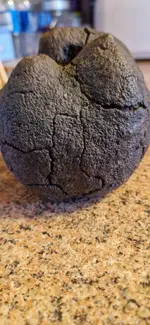 20231006_165453.webp629.7 KB · Views: 23
20231006_165453.webp629.7 KB · Views: 23 -
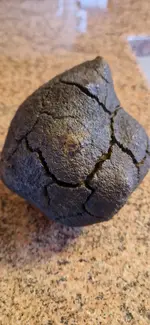 20231006_165507.webp597.2 KB · Views: 20
20231006_165507.webp597.2 KB · Views: 20 -
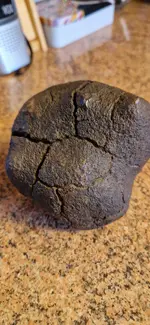 20231006_165514.webp651.8 KB · Views: 21
20231006_165514.webp651.8 KB · Views: 21 -
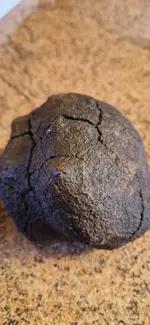 20231006_165528.webp577.3 KB · Views: 21
20231006_165528.webp577.3 KB · Views: 21 -
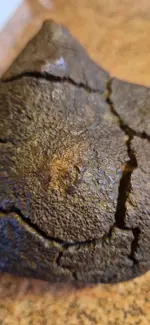 20231006_165541.webp573 KB · Views: 20
20231006_165541.webp573 KB · Views: 20 -
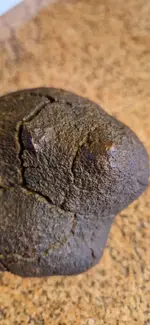 20231006_165612.webp567.4 KB · Views: 19
20231006_165612.webp567.4 KB · Views: 19 -
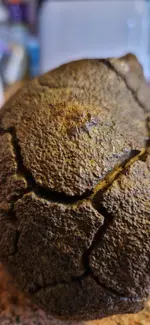 20231006_165639.webp668.6 KB · Views: 22
20231006_165639.webp668.6 KB · Views: 22 -
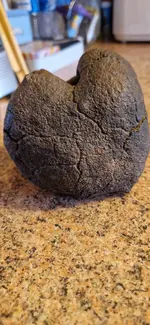 20231006_165447.webp794.8 KB · Views: 20
20231006_165447.webp794.8 KB · Views: 20 -
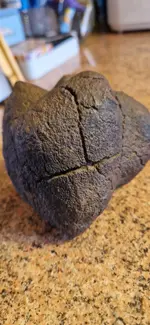 20231006_165440.webp596.8 KB · Views: 21
20231006_165440.webp596.8 KB · Views: 21 -
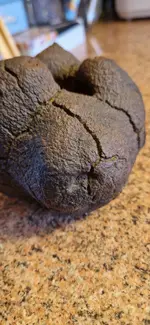 20231006_165434.webp641.3 KB · Views: 19
20231006_165434.webp641.3 KB · Views: 19 -
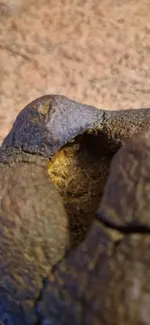 20231006_165423.webp524.8 KB · Views: 21
20231006_165423.webp524.8 KB · Views: 21 -
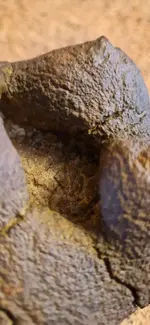 20231006_165408.webp541.9 KB · Views: 21
20231006_165408.webp541.9 KB · Views: 21 -
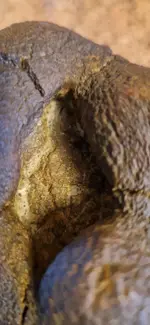 20231006_165402.webp559.4 KB · Views: 22
20231006_165402.webp559.4 KB · Views: 22 -
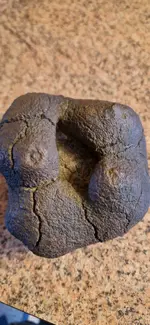 20231006_165353.webp702.6 KB · Views: 22
20231006_165353.webp702.6 KB · Views: 22 -
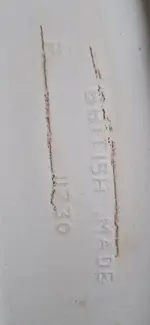 20231006_165117.webp355.4 KB · Views: 25
20231006_165117.webp355.4 KB · Views: 25 -
 20231006_164953.webp456.6 KB · Views: 26
20231006_164953.webp456.6 KB · Views: 26 -
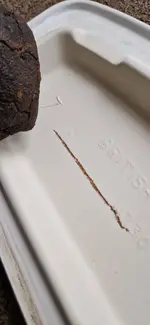 20231006_164727.webp373.6 KB · Views: 26
20231006_164727.webp373.6 KB · Views: 26 -
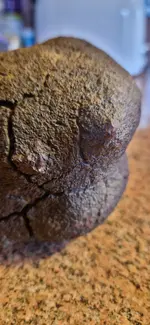 20231006_165701.webp554.4 KB · Views: 24
20231006_165701.webp554.4 KB · Views: 24
Upvote
1
- Joined
- Nov 14, 2010
- Messages
- 4,958
- Reaction score
- 14,522
- Golden Thread
- 0
- Location
- The Great Southwest
- Primary Interest:
- Prospecting
Thanks for doing the streak test. 
Mystery solved! That does settle the issue. The geologist was right. Clearly it's composed of Hematite with possibly some intermixed Magnetite. Just what you would expect from an oxidized Pyrite concretion.
The orange portion in the middle is likely to be Limonite another iron ore oxidation product. commonly found in Hematite concretions.

Mystery solved! That does settle the issue. The geologist was right. Clearly it's composed of Hematite with possibly some intermixed Magnetite. Just what you would expect from an oxidized Pyrite concretion.
The orange portion in the middle is likely to be Limonite another iron ore oxidation product. commonly found in Hematite concretions.
Last edited:
Upvote
0
Similar threads
- Replies
- 1
- Views
- 418
- Replies
- 2
- Views
- 567
- Replies
- 10
- Views
- 431
Users who are viewing this thread
Total: 1 (members: 0, guests: 1)

